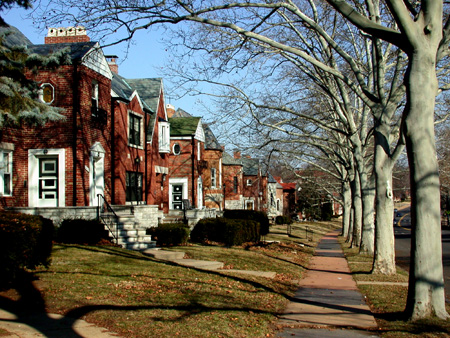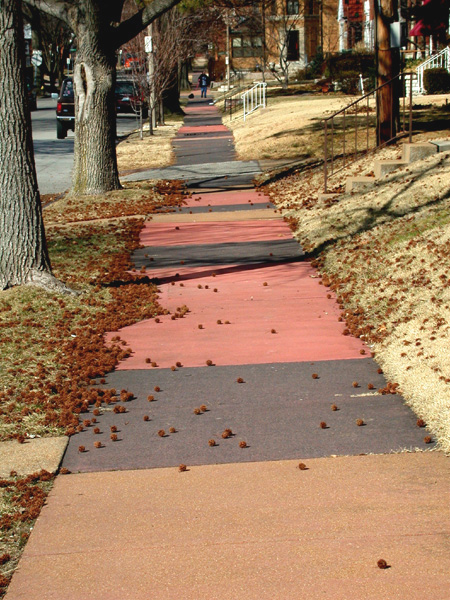Recovered from the Wayback Machine.
This essay is long, and includes terms that are racially offensive, but also representative of the time in which they were used.
Much of my earliest reading was through books I pilfered from my brother’s shelves when he was out playing with his friends. It was through my brother that I was introduced to comic characters such as Superman and Batman, that guy made out of stone, Spiderman, and so on. My first exposure to science fiction was E.E. “Doc” Smith, and my first classic novel was “Song of Hiawatha” by Longfellow.
It was also through my ‘borrowing’ that I was introduced at a very young age to Ayn Rand’s “Fountainhead”.
It’s no surprise that Ayn Rand was favored reading in our school. Her philosophy of Rational Egoism and Objectivism was perfect fodder for a people who were extreme Libertarians even before there were Libertarians. Each man takes care of himself and his family and those neighbors he knows, but the rest of the world “out there” is someone else’s problem. If God didn’t intend the strong to survive he wouldn’t have given us two hands and a gun to hold.
I didn’t particularly understand politics at the time. I knew that one close family friend had a bomb shelter in his backyard, and another buried jars of real metal coins along with food and weapons throughout his property, but I just thought this was the way people lived. “Get us out of UN now” posters don’t mean much when you don’t know what UN is, and the sign outside of Kettle “welcoming us to John Birch Country” was nothing more than a visual indicator that we were getting close to home – same as the funny pile of boulders along the left side of the road, and the drive in movie picture place.
The rest of the country may have had troubles with race but my people knew who the real enemy was: the Communists. And they knew for an actual fact, that someday the Reds would be in our town, knocking down our doors and forcing the Godless ways of Communism on us.
(All the while our parents worried about the communists, we kids bought black licorice nigger babies at the candy store, and picked past the nigger toes to get to the cashews in the all nut mix. And I never did understand why my two half Native American friends from across the street couldn’t join me when I went to the community swimming pool.)
In those days, unless the weather was foul, I’d climb out my bedroom window to read on the roof. We had a big two-story home taller than most around and I could look our far enough to see Main Street and even a little bit of the grass around the school. On the rooftop, I read the story about the architect who was uncompromisingly brilliant in his art, disdaining the acceptance and success more conventional designs would bring him. Ayn Rand would say of the book that it reflected “…individualism versus collectivism, not in politics, but in man’s soul.”
I was too young to understand about individualism or collectivism, but I did understand about an uncompromising dedication to one’s art or one’s belief, something I was to see in my own father, who I greatly admire. The book left in me a deeply ingrained dislike against conformity, even such conformity as is considered ‘necessary’ for the common good.
Not long after reading Fountainhead, we moved to Seattle. It was there, while I was a “Candy Striper” (a teenage volunteer) at a local hospital that I met a young black orderly who gently explained to me that ‘nigger’ wasn’t a polite term. This same young man also introduced me to the words of Martin Luther King, and I found myself lost in the power of “I have a Dream”, and the belief that we shall overcome. At the same time, Vietnam was becoming more of a nightmare and if I couldn’t see that man’s manifest destiny was filled by oppressing blacks, it certainly wasn’t being filled by killing and being killed by Vietnamese in a place we clearly didn’t belong. I embraced both the civil rights movement and the peace movement, and happily joined arms with my brothers and sisters of all colors to call for an end to war, and an end to oppression.
I saw no discrepancy between joining these movements and my continued belief in uncompromising individuality. I felt strongly that every person had a right to achieve their own success as an individual, and that a society that sought to oppress individuals because of color or nationality was wrong, and needed to be fixed. There is no hypocrisy in recognizing that a group may achieve what an individual cannot, but still believe in individualism.
Which leads me to today. To here. To now.
There has been discussion recently about community and individualism. In particular, Trevor Bechtel wrote the following:
Isn’t the cultural narrative of communites much more powerful than any personal self-knowledge I, or any individual, might posess. Surely I must assent to aspects of one or more communities representations of the world and this in turn shapes the community but the articulation is at the community level first and always most strongly. I may struggle mightily with a community, even one I feel deeply committed to, but it is only in understanding my life in the context of a communal narrative that I can understand life at all. Culture moves us forward not in an inevitable march of progress but simply because it forces us to stand on others shoulders. There is no scratch from which an individual could start an articulation of self-knowledge. And even if there was, who would want to?
An individual’s ideas are rarely that interesting. A communities ideas, even when they are wrong or limiting or confining often are.
Bechtel continues this theme in Happy Tutor’s comments:
I think many people find it necessary to be individuals and this probably isn’t all bad, but in the end it is the dynamics of there relationship to their community that shapes who they are.
As Happy Tutor rightfully has pointed out, I am nothing but a computer geek and not a learned PhD or academic, so I can’t depend on an academic argument to bolster my view. However, in spite of this, I do know when I read something that completely misses the strengths of individuality in the rush to extol the virtues of the communal good. He forgets the power of free will.
To make of each of us into nothing more than a puppet to the community’s whims and actions would still see me back in a small town in the middle of nowhere, married with a dozen children, racist, bigoted, and afraid of anything outside of that which is comfortably familiar. However, lest you think it was exposure to another community that changed me, think again. It was my own uncompromising individuality that started my discordant communion with my ‘community’.
In the fifth grade, before I moved to Seattle, we were given a topic to write about: “what the flag means to me”. Among all the stories of patriotism and love and belief in “God, Family, and Country” that the flag represented to my classmates, I wrote an essay that said, in effect, that the flag was basically a piece of cloth, it could have just as easily been orange, green, and purple as much as red, white, and blue, and it was basically nothing more than a symbol, which could have easily been replaced by some other symbol. I also said that I thought the Pledge of Allegience was so many emptry words, and saluting the flag was an empty gesture.
As you can imagine, this didn’t exactly make my fellow classmates happy. I do have a very vivid memory in my mind of my friends reactions that day in class. Very vivid.
No act of the community helped me arrive at my viewpoint. No one coached me in these words. This was me taking a close look at the community around me and seeing for myself the emptiness in so many of our gestures. It was my free will, my individuality, which gave me the ability to look at what the community offered and to choose to reject it.
Was I out to change minds? No, I was only answering the question truthfully for me. Did I change the community or enrich it? Not a chance. This act was the act of an individual operating, however momentarily, outside of the community. Did that make my act unimportant? No! For me, it was probably one of my most defining acts of my life, one that I continue to this day with all my ‘contrary’ writings.
Now, your reaction might be to say, then, that I lack individuality because I deliberately choose a contrary viewpoint. Of course, this becomes somewhat tantamount to the old question of “When did you stop beating your wife”.
I don’t deliberately choose a contrary viewpoint. There are hundreds of events that occur daily that I don’t write about, either yay or nay; and hundreds that I write in support. But there are few things more irritating to me then to see herd like behavior in pursuit of the “good of the commons”, particularly when any behavior outside of the ‘herd’ is considered ‘bad form’. Or unpatriotic.
There are also few things I dislike more than acts, covert as well as overt, attempting to silence those who do not agree. Something I’m seeing with disquieting regularity within this form of communication we call ‘weblogging’.
When I see these things, these group behaviors, I am moved to act. If these actions are the act of a mindless automaton as part of reaction to ‘community’ so be it. Beep, friggen, beep.
Am I denying that we’re part of communities? Can an individual be part of a community? Of course. As John Donne wrote:
No man is an island, entire of itself; every man is a piece of the continent, a part of the main.
We are on a small world, existing on finite resources. Our actions can and do have repercussions on others. To deny that is to deny our responsibility to the greater community that is Earth. But accepting our responsibility as citizens of this world does not preclude the existence of the individual, or the importance of individualism. We belong to as many communities as communities have people, and with each, we choose what to receive from, or to give back to, the community. We choose. We choose.
To say that we are hapless participants within a community, unimportant of and by ourselves is to deny all that is great in us – is to deny our individuality. Our uniqueness. The wonder of Me in each of us.




